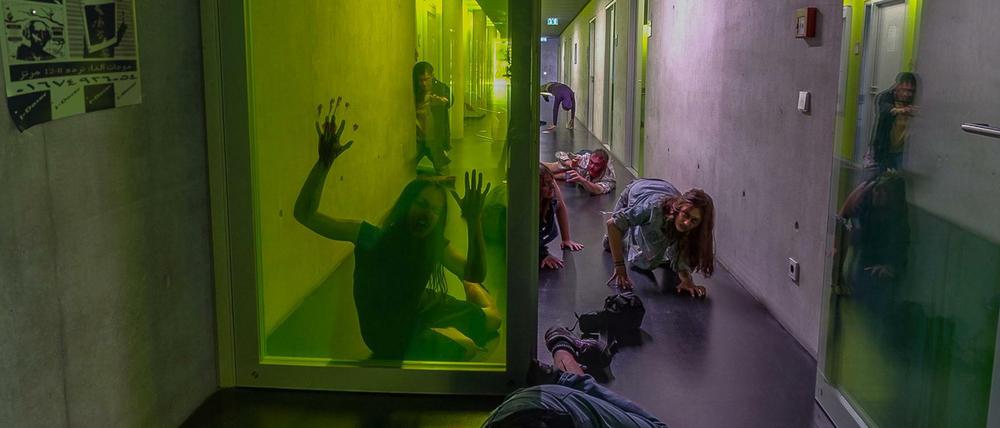
© Stefan Schrader
Berlin Art Week International: Berlin‘s art incubators: Ein englischer Gastbeitrag
Berlin is full of expats that boost the local art scene with fresh ideas and truely international programms. Here are five of the most exciting projects with no geographic or conceptual boundaries.
In 2013 I moved myself and my “project space” to Berlin from London, escaping high cost and low income, lured by a seemingly interesting and active scene that combined or confused galleries and project spaces including: Societé, Kraupa-Tuskany Zeidler, Future Gallery, and Club Midnight, all which were seemingly young and adventurous, at least from the other side. Sadly the scene that brought me here soon after dissipated, disbanded and became subject to international critical discourse branded as Post Internet.
Luckily the same year the galerist Barak Bar-Am helped me find a second home for The Composing Rooms in Goethestrasse, Charlottenburg, then offered me a job working for his new gallery upstairs, Neumeister Bar-Am. It was there I met Lauryn Youden, who co-founder of the project space Ashley, and through my program I was introduced to founders of other spaces such as Oracle.
“Today its almost automatically international as people are constantly moving between countries and traveling”, said the Oracle founders. So sharing this feeling when asked to suggest interesting international project spaces in Berlin, I chose to challenge the notion, and resultantly include several spaces founded by Germans. Additionally considering dubious differentiation between spaces for art (try creating a set of reasons why a kunsthalle, museum, gallery or project space differ), I choose to challenge the notion of a project space, favouring low budget adventurous projects that do not see geographic or conceptual boundaries.
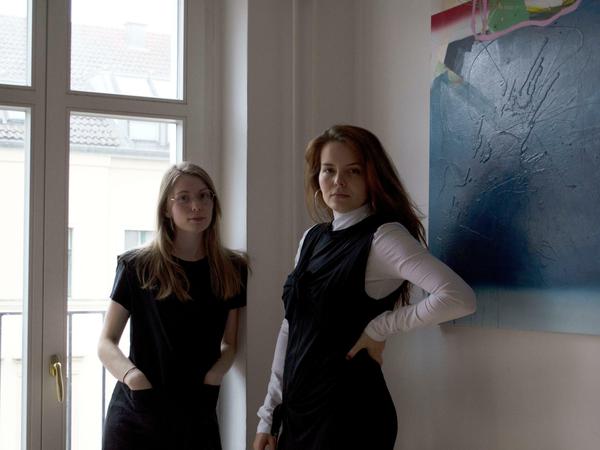
© Ashley Berlin
One solution is the studio-cum-gallery-cum-mini-institution and residency: Ashley. Founded by Canadians Kate Brown and Lauryn Youden, Ashley is uniquely collaborating with and supported by the Embassy of Canada, while un-uniquely grew out of a bedroom project, now residing in building in a backyard in Kreuzberg which sounds familiar to Berlin. „It has a permanently locked elevator shaft, crisp white false gallery walls ¬ we have no idea what lies behind them , a second door that is mysteriously locked without a door knob or key hole, and traces of spongy wallpaper covered in layers of paint”, say Lauryn and Kate.
Despite their supporters Ashley do not try to promote a specific Canadian identity, but rather a “plurality of Canadian identities and perspectives inclusive of ones that are not Canadian”, such as Jenna Sutela, an artist and researcher from Finland currently investigating slime mould, and the young, berlin-based poet and sound artist Hanne Lippard originating from the UK. The Berlin-based, Canadian artist AA Bronson wrote already in 1983: Canadian artists are “typically unable to picture the reality of a Canadian art scene except as a dream projected upon the national landscape as a sea-to-shining-sea connective tissue”. Ashley’s approach is fluid, also reflected in their dispersion of the Canadian diaspora exhibited in their program. Shaun Motsi, Alex Turgeon, Emma LaMorte, Emmy Skensved, Grégoire Blunt and Athena Papdopouloas, to whom they gave her first solo exhibition in Europe, are just some of these Canadian diaspora, living in Germany, Stockholm, Greece, the UK and elsewhere. “There is a huge irony in the term sea-to-shiny-sea, as it recalls our national anthem and the colonial implications of our position”, they say. „We don't want to be cultural exporters, but a continuation of Canada's artist-run centre's mandates to explore the shaky and constantly shifting sense of self, a sense of self that is known to be very open to others.”
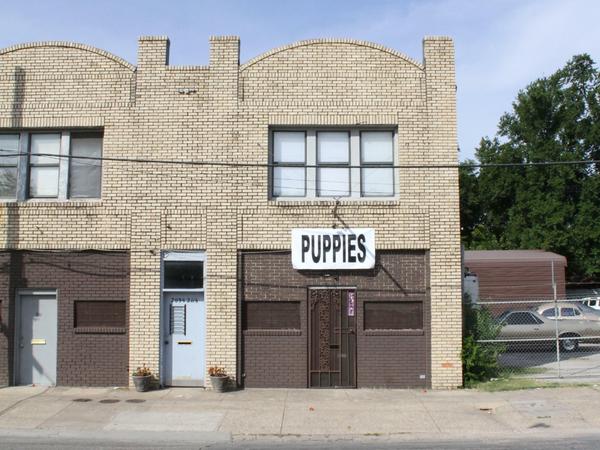
© Kevin Ruben Jacobs
Pushkin & Gogol, founded by Kevin Rubén Jacobs in 2017, is a continuation of a project from his hometown Dallas, Texas previously called Oliver Francis Gallery (OFG.XX), that shares this openness. OFG has existed transiently, since 2011 and since the early days we shared a enthusiasm over a few artists via email. Local media described OFG.XX as ‘scrappy, can-do, ultra-hip’ and ‘the closest thing to the in-your-face sensibility found in New York’s Lower East Side or Berlin’, suggesting the ‘provocative’ artwork perhaps not so suited to most locals. Therefore not a surprise Jacobs moved himself and his gallery to Berlin, due to open in October.
The past exhibition program of provocative work has included artists from around the world notably: Dutch artist Rachel de Joode who is based in Berlin and included in the Body Holes exhibition by New Scenario, Puppies Puppies, who recently exhibited at The Oracle, Montenegro-born, New York-based Darja Bajagic who merges “the conventions of painting and porn” and established artist Kristin Oppenheim from Hawaii.
Jacobs, who doesn’t see boundaries as to who he can work with, should certainly be missed amongst the Dallas art scene, where he also held a curatorial position with Goss Michael Foundation between 2011 and 2015. When asked if he considers an international audience he said that Pushkin & Gogol is for anyone who is interested, adding: “It’s physically in Charlottenburg (open doors during open hours), but exists mainly through its URL”. Jacobs is hyper aware of the online audience, after all he said it was hard to engage the local audience in Dallas. What will he bring to Berlin? An amazing Texan attitude, that is, humble, open, not afraid of having fun and not to serious, in his words: „Entertainment.“
All power to DIY projects

© privat
I’m sure the founders of The Oracle, curators Daniel Herleth and Bärbel Trautwein, would not be as comfortable calling their program entertainment. Oracle first opened in an apartment in Neukölln in 2014 offered by Herleth’s ex professor Rainer Ganahl. “We were very interested in exhibitions with a strong curatorial thesis and we wanted to experiment with this format in the context of an independent space” they said. Since opening there has been a strong thematic of text based works recurring through the program, evident from the first exhibition, Simon Speiser who works with text and storytelling, while also creating immersive settings to their last exhibition in their Charlottenburg address: Jenny Holzer’s Inflammatory Essays (1979–82) consisting of 24 short texts, each a hundred words long, arranged in twenty lines.
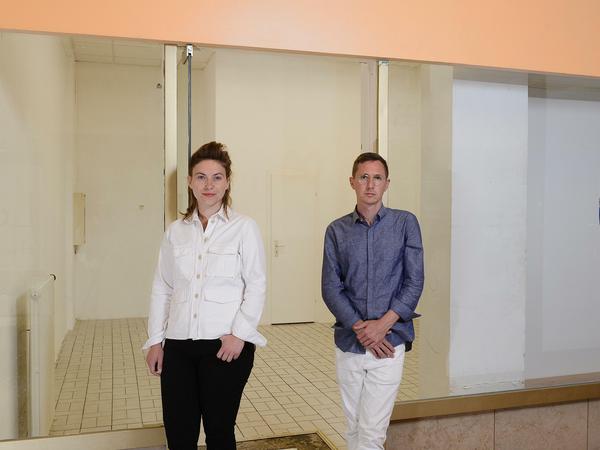
© Mike Wolff
Their first group show ‚Pink Panther’ painted a picture of a general sense of the art world where somehow things go wrong, auction results soar and fall within weeks. Their program was decidedly against the concurrent craze in crapstraction, opting instead for established yet somewhat overlooked artists such as Peter Fend and Ariane Müller. “The list of participants, this chain of precious associations, turns into tomorrows nobodies”, was their premonition, based on a cyclical nature, suggesting there is no way to see what will be necessarily important now from a future perspective. What we can count on is: “Those with empty pockets conceive ever new ways to profit from metonymic, geographic or social proximity, produce new semantics and find sense where meaning was lost.” All power to DIY projects!
Another such DIY project, described as “pigeonhole-defying” is Peles Empire, both a pseudonym for the collaborative practice of artists Katharina Stöver and Barbara Wolff, and an salon type artistic layering in which Stöver and Wolff invite other artists to exhibit their work on top, or rather inside of their own. The name draws from Wolffs homeland Romania, and more specifically the neo-renaissance Peleș Castle built for King Carol I at the end of the 19th Century in the Carpathian Mountains. Since 2005 the artists have been compiling a photographic documentation from Peleș 160+ rooms, which themselves represent styles – including Baroque, Turkish, Imperial, Art Deco, and Gothic, to name a few – and replicating them in their work as a backdrop, giving a sense of transposition that seems in itself a valid contemporary condition of internationality.
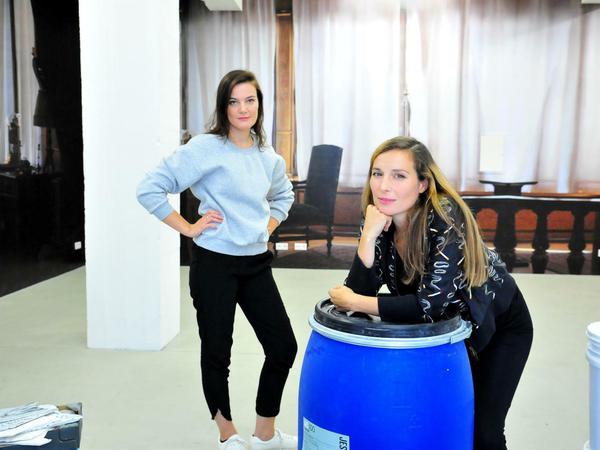
© Doris Spieckermann-Klaas
Peles began in a spare room in Frankfurt while the duo were studying at Städelschule, they printed and adhered images of the Prince’s Bedroom 1:1. Subsequently the room took form as a salon hosting events of all kinds, and soon after they initiated the Empire in London, in 2006 hosting eight exhibitions and events as well as a bar, activating a new network of individuals which is how I came to be introduced to them via Lucky PDF.
Peles Empire has travelled the castle interior from Frankfurt to London via Bremen, Antwerp Rotterdam, Cluj, Istanbull, L.A. to Basel to Berlin where it is now, since 2016 as part of their studio on Karl-Marx-Strasse, dressed in a more subdued cabinet room from the castle. Meanwhile artists Stöver and Wolff are busy exhibiting kunstvereins and galleries, including recent installs, a bar made of Jesmonite in Frankfurt for Portikus, a large sculpture for Skulptur Projekte Münster where they continue the social tradition of hosting ‘bar talks’ through the summer until 23rd September, and “a collaborative TV project with conglomerate TV… shot and exhibited at the beginning of October”. As a space Peles will reopen in September and host upcoming solo exhibitions by Shannon Bool and Lucy Beech.
Working bottom-up is of utmost importance

© Trevor Good
While Peles Empire creep out of or manipulate the white cube, the only project here that is working outside the white cube is New Scenario, a curatorial collaboration between artists Paul Barsch and Tilman Hornig that started in 2015 and manifests as online exhibitions through newscenario.net. Their first was CRASH, curated together with Burkhard Beschow, including 11 artworks by 11 artists installed in various flashy locations of the interior of a stretch limousine. Each artwork was documented separately and put online, and while the imagery originates from Berlin the exhibition received “thousands of (online) visitors in its opening”. A visit to the exhibition involves going to the website and selecting to view artworks such as a painting of a swan (on a chain?) by Anne Fellner, crammed against one end of the vehicle and reflected throughout the surfaces, or a set of three watches on a baguette by Adam Cruces, installed inside a speaker and drinks compartment.
New Scenario were ‘bored by all the generic and standardised exhibitions around us’, saying they went online because: ‘In terms of presentation and documentation of artworks we felt there is a lot more that is possible, that this is a realm that can and must be shaped, artistically and conceptually.’ They also said that the overwhelming visitors to CRASH encouraged future projects, especially ‘if you consider the average amount of visitors who get to see a show in a physical space’. These include: ‘Body Holes’, co-curated with Nuno Paricio, an exhibition in human orifices hosted by the 9th Berlin Biennale, and installations paintings set amongst life size Dinosaur replicas for ‘Jurassic Paint’. Through these exhibitions New Scenario have exhibited many international established artists including several I’ve happily worked with: Jesse Darling, Joey Holder, Rachel de Joode and Jon Rafman, and some I’d be curious to: Ann Hirsch, Jaakko Pallasvuo and Mariechen Danz.
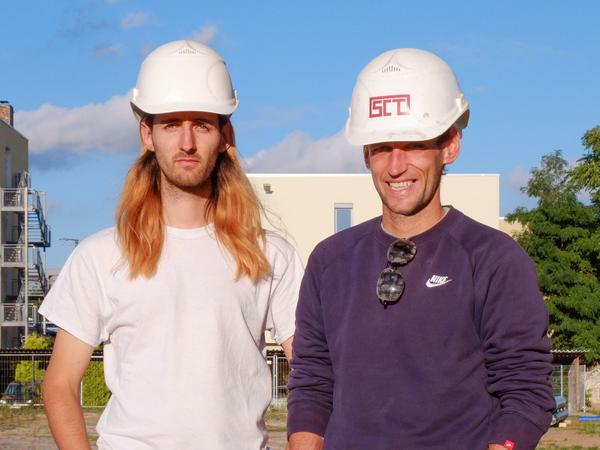
© New Scenario
For their most recent, and incredibly unique project, ‘HOPE’, hundreds of actors and extras were cast as zombies, and over six months were dedicated to a take over of the Technische Universität Dresden campus. Initiated by Gwendolin Kremer (curatorial director, Altana Galerie, TU) New Scenario were invited to present something (they were thinking in their gallery) and resultantly 14 rooms (excluding the gallery), and with the sponsorship award “Catalogues for Young Artists” from the Alfried Krupp von Bohlen and Halbach-Stiftung, were heavily set dressed to represent a recent outbreak in walking dead, each room presenting a single artist’s works, before being photographed in 360º. Referencing paintings by Hieronymus Bosch and Brueghel der Ältere, the staged scenarios of Jeff Wall and cinema, New Scenario sketched a rather dystopic vision of our contemporary/near future life while pushing perception and possibilities of presenting artwork forward.
Past projects in Berlin, such as Times Bar initiated by Americans Calla Henkel and Max Pitegoff which closed in 2012, certainly still resonate but fast forward to 2017, it is hard to see what will be influential now of those mentioned amongst other projects spread through the city, including Cave3000, M.I/mi1glissé, Frankfurt am Main, Walks News, Liszt and panke.gallery. If art is to have any power against what it supposedly should, then working bottom-up is of utmost importance, which means working with what you can get your hands on and continuing to challenge the top-down structures, and one way is thinking outside the box.
Dieser Text stammt aus der neuen Ausgabe des Tagesspiegel-Magazins "Kunst Berlin" und kann dort auch auf Deutsch nachgelesen werden. Das Heft mit dem wichtigsten zu Kunst und Kultur können Sie in unserem Online-Shop bestellen, unter https://s1.tagesspiegel.de/kunst-berlin-2017.html
Ausstellungshinweise:
Ashley, Oranienstraße 37, Kreuzberg, Elif Saydam, Opening 15.9.,18-21 Uhr im Rahmen der Berlin Art Week 2017
Oracle, Joachimsthaler Straße 14, Charlottenburg, http://theoracle.works
Peles Empire, Karl-Marx-Straße 58, Neukölln, www.pelesempire.com
Pushkin & Gogol, Schillerstraße 6, Charlottenburg, Ausstellung von Jesse Morgan Barnett beginnt am 28.10.2017, www.pushkinandgogol.com
NewScenario, newscenario.net
The Composing Rooms, thecomposingrooms.com
Ché Zara Blomfield
- showPaywall:
- false
- isSubscriber:
- false
- isPaid:
- showPaywallPiano:
- false